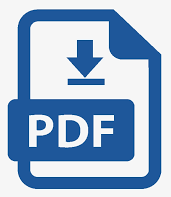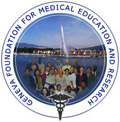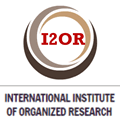Síndrome 18q-. Informe de caso
Texto completo:
PDFResumen
Palabras clave
Referencias
Loevner LA, Shapiro RM, Grossman RI, Overhauser J, Kamholz J. White matter changes associated with deletions of the long arm of chromosome 18 (18q2 syndrome): a dysmyelinating disorder? AJNR [Internet]. 1996 Nov [citado 9 Ene 2019];17:1843–1848. Disponible en: http://www.ajnr.org/content/ajnr/17/10/1843.full.pdf
Larner AJ. Deletion of 18q. En: DADS. Reference Work Entry; 2009. p. 503-504 [citado 9 Ene 2019]. Disponible en: https://health.springer.com/content/pdf/10.1007%2F978-3-540-29676-8_463.pdf
Córdova-Fletes C, Sáinz-González E, Avendaño-Gálvez RI, Ramírez-Velazco A, Rivera H, Ortiz-López R, et al. De novo dir dup/del of 18q characterized by SNP arrays and FISH in a girl child with mixed phenotypes. J Genet [Internet]. 2014 Dec [citado 9 Ene 2019];93(3):869–873. Disponible en: https://health.springer.com/content/pdf/10.1007%2Fs12041-014-0459-8.pdf
Chen H. R(18) Syndrome. Atlas of Genetic Diagnosis and Counseling [Internet]. Springer Science Business Media LLC; 2017. p. 2417-2425 [citado 9 Ene 2019]. Disponible en: https://link.springer.com/content/pdf/10.1007%2F978-1-4939-2401-1_200.pdf
Kline AD, White ME, Wapner R, Rojas K, Biesecker LG, Kamholz J, et al. Molecular Analysis of the 18q- Syndrome-and Correlation with Phenotype. Am J Hum Genet [Internet]. 1993 May [citado 9 Ene 2019];52(5):895-906. Disponible en: https://www.ncbi.nlm.nih.gov/pmc/articles/PMC1682039/pdf/ajhg00063-0049.pdf
Feenstra I, Vissers L, Orsel M, van Kessel AG, Brunner HG, Veltman JA, et al. Genotype–Phenotype Mapping of Chromosome 18q Deletions by High-Resolution Array CGH: An Update of the Phenotypic Map. Am J Med Genet A [Internet]. 2007 Aug [citado 9 Ene 2019];143A(16):1858–1867. Disponible en: https://onlinelibrary.wiley.com/doi/pdf/10.1002/ajmg.a.31850
Marsán Suárez V, García García A, de León Ojeda N, Macías Abraham C, Sánchez Segura M, Benítez Rodríguez D, et al. Síndrome de Edwards asociado a inmunodeficiencia combinada. Rev Cubana Hematol Inmunol Hemoter [Internet]. 2011 Jul-Sep [citado 9 Ene 2019];27(3):342-348. Disponible en: http://scielo.sld.cu/scielo.php?script=sci_arttext&pid=S0864-02892011000300010
Plaza Pinto I, Bernardes Minasi L, Silva da Cruz A, Vieira de Melo A, da Cruz e Cunha DM, Roncato Pereira R, et al. A non-syndromic intellectual disability associated with a de novo microdeletion at 7q and 18p, microduplication at Xp, and 18q partial trisomy detected using chromosomal microarray analysis approach. Mol Cytogenet [Internet]. 2014 [citado 9 Ene 2019];7:44. Disponible en: https://health.springer.com/content/pdf/10.1186%2F1755-8166-7-44.pdf
Cody JD, Davis Ghidoni P, DuPont BR, Hale DE, Hilsenbeck SG, Stratton RF, et al. Congenital anomalies and anthropometry of 42 individuals with deletion of chromosome 18q. Am J Med Genet [Internet]. 1999 Aug [citado 9 Ene 2019];85(5):455-462. Disponible en: https://onlinelibrary.wiley.com/doi/pdf/10.1002/%28SICI%291096- 8628%2819990827%2985%3A5%3C455%3A%3AAID-AJMG5%3E3.0.CO%3B2-Z
Zanolli M, Levin AV, Lay-Son G. Oculofacial Manifestations of Chromosomal Aberrations. En: Levin AV, Enzenauer RW. The Eye in Pediatric Systemic Disease. Switzerland: Springer; 2017. p. 144-145 [citado 9 Ene 2019]. Disponible en: https://link.springer.com/content/pdf/10.1007%2F978-3-319-18389-3_6.pdf
Margarit E, Morales C, Rodríguez-Revenga L, Monné R, Badenas C, Soler A, et al. Familial 4.8 MB deletion on 18q23 associated with growth hormone insufficiency and phenotypic variability. Am J Med Genet Part A [Internet]. 2012 Mar [citado 9 Ene 2019];158A:611–616. Disponible en: https://onlinelibrary.wiley.com/doi/pdf/10.1002/ajmg.a.34221. doi: 10.1002/ajmg.a.34221
Yueh-Chun Li, Yi-Ju Pan, Fuu-Jen Tsai, Chyi-Chyang Lin. Prenatal molecular cytogenetic analysis of a mild dysmorphic fetus with a huge unbalance karyotype involving partial 9p deletion and partial 18q duplication. Genes & Genomics [Internet]. 2016 Jan [citado 9 Ene 2019];38(1):53–57. Disponible en: https://link.springer.com/article/10.1007/s13258-015-0340-z
Wang CH, Ren H, Dong H, Liang M, Wu Q, Liao Y. 18q22.1-qter deletion and 4p16.3 microduplication in a boy with speech delay and mental retardation: case report and review of the literature. Mol Cytogenet [Internet]. 2018 Oct [citado 9 Ene 2019];11:55. Disponible en: https://link.springer.com/content/pdf/10.1186%2Fs13039-018-0404-2.pdf
Cody JD, Hasi M, Soileau B, Heard P, Carter E, Sebold C, et all. Establishing a reference group for distal 18q-: clinical description and molecular basis. Hum Genet [Internet]. 2014 Feb [citado 9 Ene 2019];133(2):199–209. Disponible en: https://link.springer.com/content/pdf/10.1007%2Fs00439-013-1364-6.pdf
Zlotina A, Nikulina T, Yany N, Moiseeva O, Pervunina T, Grekhov E, et al. Ring chromosome 18 in combination with 18q12.1 (DTNA) interstitial microdeletion in a patient with multiple congenital defects. Mol Cytogenet [Internet]. 2016 [citado 9 Ene 2019];9:18. Disponible en: https://link.springer.com/content/pdf/10.1186%2Fs13039-016-0229-9.pdf
Tassano E, Severino M, Rosina S, Papa R, Tortora D, Gimelli G, et al. Interstitial de novo 18q22.3q23 deletion: clinical, neuroradiological and molecular characterization of a new case and review of the literature. Mol Cytogenet [Internet]. 2016 [citado 9 Ene 2019];9:78. Disponible en: https://health.springer.com/content/pdf/10.1186%2Fs13039-016-0285-1.pdf
Santos Guilherme R, Hermetz KE, Teixeira Varela P, Alvarez Perez AB, Ayres Meloni V, Rudd MK, et al. Terminal 18q deletions are stabilized by neotelomeres. Mol Cytogenet [Internet]. 2015 [citado 9 Ene 2019];8:32. Disponible en: https://link.springer.com/content/pdf/10.1186%2Fs13039-015-0135-6.pdf
Yao H, Yang Ch, Huang X, Yang L, Zhao W, Yin D, et al. Breakpoints and deleted genes identification of ring chromosome 18 in a Chinese girl by whole-genome low-coverage sequencing: a case report study. BMC Med Genet [Internet]. 2016 Jul [citado 9 Ene 2019];17(1):49. Disponible en: https://link.springer.com/content/pdf/10.1186%2Fs12881-016-0307-1.pdf
Enlaces refback
- No hay ningún enlace refback.
Copyright (c) 2020 Yurkina Morales Femenia, Grisel María Alonso Gutiérrez, Carlos Ángel Santos González-Elías











 15 de abril de 2024
15 de abril de 2024


